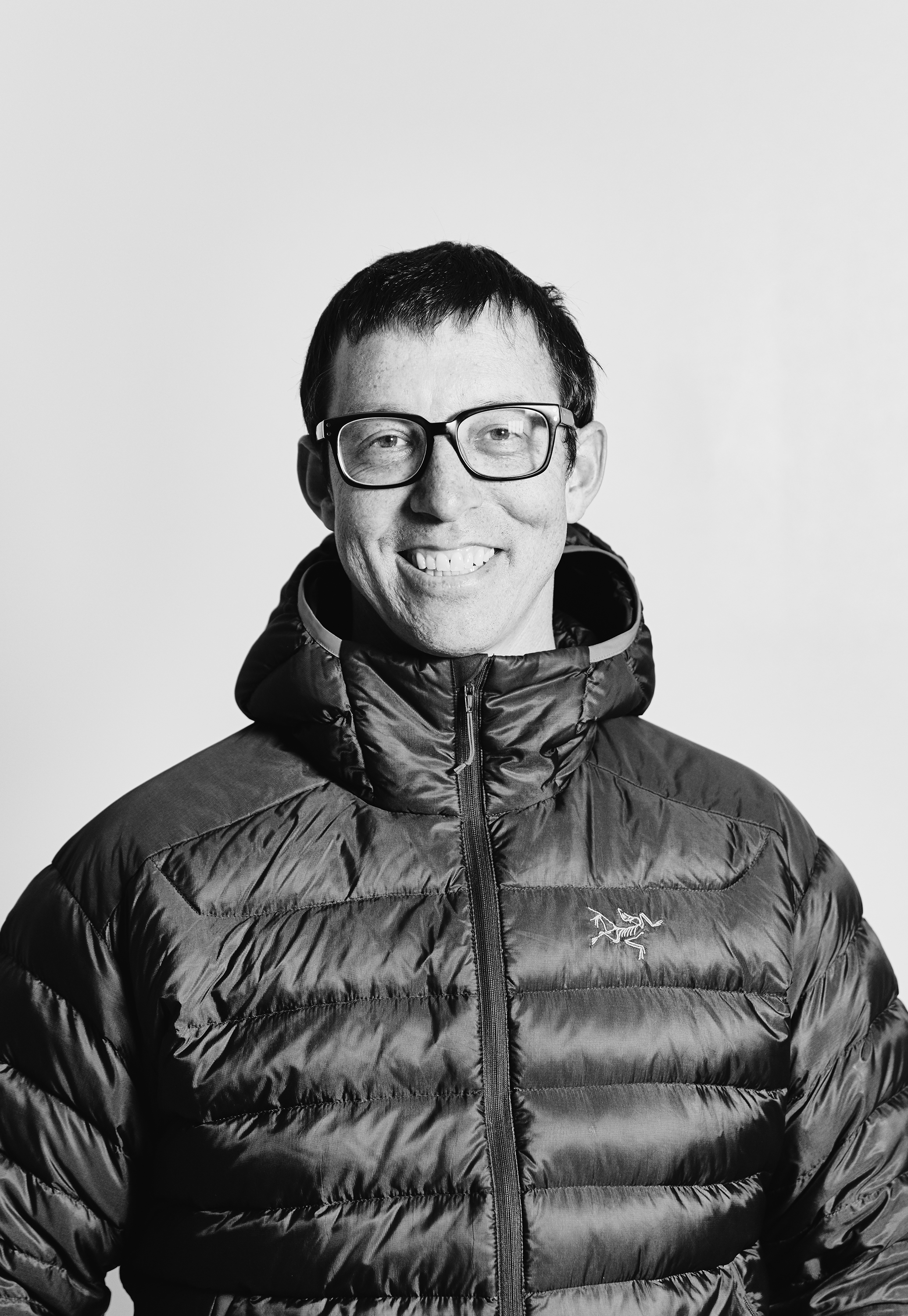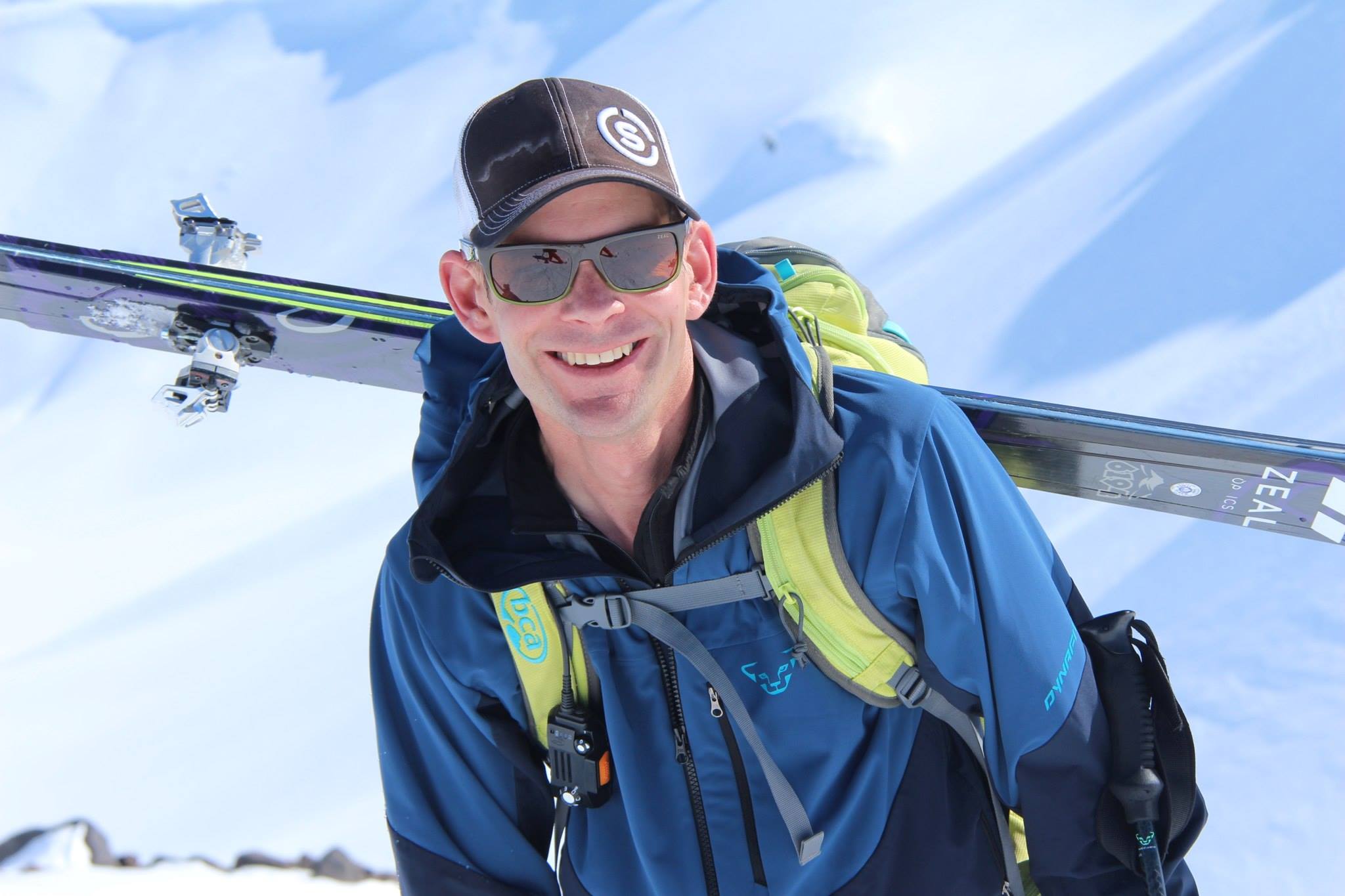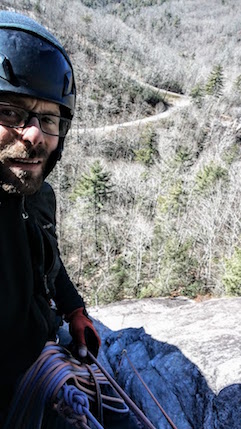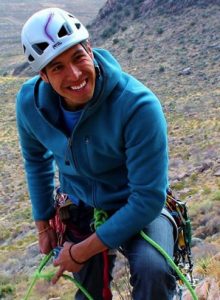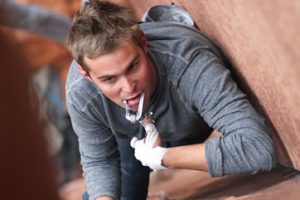Eric Layton and Brendan Burns become first splitboarders to pass the Ski Guide Exam
In a historical first, first Eric Layton and Brendan Burns have become the first-ever people to pass the Ski Guide Exam (SGE) of the AMGA’s Ski Guide Program on a splitboard. While traditionally aspirant guides had to go through the entire program, including the SGE, on skis, a decision made at the 2013 Fall Technical Committee allowed splitboarders to now do so on a split snowboard. As AMGA Technical Director Dale Remsberg wrote in a blog post in February 2014, “We still have some details to work out, such as the title for a certified Splitboard Guide and how to examine the movement,” but the program is well underway. (As of spring 2015, anyone who passes the exam on a splitboard will still be titled a Ski Guide, while, says, Remsberg, “For the movement assessment they all have to be examined by an approved snowboard-assessed instructor prior to taking their full exam.”) Aspirants must travel via skins, not snowshoes, as well as demonstrate all the same guide skills as skiers. For now, anyone who passes the SGE on a splitboard will not attain IFMGA certification, as the IMFGA platform doesn’t recognize the certification, though you can return, on skis, to take a one-day assessment for AMGA/IFMGA Guide certification.
Of note, Layton was the recipient of the 2015 F.O.R.G.E Scholarship (the acronym stands for Friends of Rick Gaukel Everywhere), and has posted a scholarship report about his experience on the SGE in Pemberton, British Columba. Gaukel, a splitboarding aficionado, Certified Single Pitch Instructor, and Apprentice Rock and Ski Guide, died April 20, 2013, in Sheep Gulch on Loveland Pass, Colorado, in an avalanche that also claimed the lives of four other backcountry skiers and snowboarders. His family and friends subsequently set up the F.O.R.G.E Scholarship to support people who embody Gaukel’s passions and qualities, and who aspire to become AMGA splitboard guides.
Layton completed his SGE April 6-13 in Pemberton, British Columbia, while Burns completed his SGE in Chamonix, also this spring. We recently caught up with both of them, post-exam, to hear their thoughts on taking the SGE on splitboards and on the evolution of splitboarding and splitboard guiding in the backcountry.
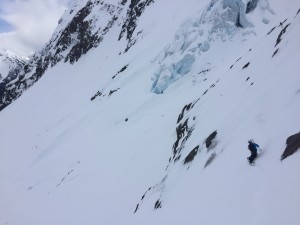
Eric Layton demonstrating a technical downhill guide on the Northeast Glacier of Cayoosh, British Columbia. Photo: Dylan Taylor
Eric Layton Q & A
How long have you been snowboarding, and then splitboarding? What got you into splitboarding?
I began snowboarding 25 years ago and have been splitboarding for about 15 years now. I started my backcountry travel boot packing and using verts for accessing my ski lines. As my desire to push farther and farther into the backcountry grew, so did my need for higher-quality equipment, thus sparking my interest in splitboarding.
From your time in the field that you’ve seen a real need and desire among guests for splitboard guiding—how has this changed, or evolved, over time as more and more people find their way to the outdoors?
The need for splitboard guiding is apparent with the increase in backcountry travel and the improvements in splitboard technology. With the increase of fat skis and the type of turns that are now being carved, it doesn’t really matter what type of tool your guide uses as long as they are aware of the limitations of both; although the camaraderie of being on the same equipment can be inspiring. I think what does matter is safety, professionalism, and the capability to manage mixed groups and abilities. The new-school guides of today now know how to guide and adapt to client needs regardless of the equipment they are on.
Where will you or do you do most of your splitboard guiding? What makes that place special to you, and desirable as a venue for guests?
I have had the privilege of riding all over the world. Every place has it unique benefits, and is a part of why I love guiding. Continually adapting to different geographical locations and snowpacks is one of the challenges of guiding that excites me as well as keeps my skills current.
However, in the winter, a majority of my guiding takes place in British Columbia, home of the most consistent powder in the world, and Alaska, where snowpack and terrain come together to enable us to ride steep, aesthetic lines on a consistent basis. Come spring, a bulk of my guiding takes place between the Sierra Range and the Cascade Volcanoes where the accessibility and springtime corn are second to none. Sure, you need to have a desirable location, incredible terrain, and good snow to make guests happy, but passion and the insatiable desire to turn any trip into a winner is what enhances the guests’ experience.
You talk about the challenges and also rewards of going through the Ski Guide Program on a splitboard — can you be more specific about what some of both of those were?
One of the biggest challenges of going through the program on a splitboard was getting people to evaluate my guiding instead of evaluating my tool. This sometimes distracted me from focusing on the specific skills I personally needed to improve on, in order to be a better guide. But this proved to be one of biggest rewards as well. With the acceptance of splitboards being an equivalent tool, future candidates can now focus on their splitboarding proficiency and technical skills and not be trying to prove their tool equivalency at the same time.

Eric Layton on top of Hibachi Ridge on his 2015 Ski Guide Exam, British Columbia. Photo: Eric Layton Collection
When I took my first ski guide course, it was the first 12-day course comprised of all splitboarders, and the AMGA didn’t quite know what to do with us, so unfortunately a lot of snowboarders just stayed away from the certification process and worked professionally anyway, because there was a need for snowboard guides despite the lack of certification eligibility. Now the well-trained professionals who choose to snowboard can go through the program and hone their guiding skills, and the whole community will benefit from the increase in professionalism instead of just be ostracized by their sliding preference. It is so exciting to see this come full circle and be a part of the change.
How was your experience in Pemberton, and were you the only aspirant on a splitboard? Did you notice and hindrances or advantages over your peers who were on skis?
My experience in Pemberton during the Exam was great! There was a good vibe all week—I really dug it. The other candidates and the examiners helped to shape that, and we developed a strong team bond. I was the only splitboarder on my exam, and personally saw neither hindrances nor advantages between fellow ski candidates. I just slide sideways.
Will you go back on skis for the one-day assessment for IFMGA accreditation?
I skied for many years, and still like a good groomed run to lay down some turns. As far as I see it, if you are going for Mountain Guide status, you should be proficient on skis, because you are representing everything that is done on the mountain, but then maybe skiers should be held to the same standard and have to show proficiency in snowboarding as well.
What’s next, now that you have your certification?
I’m still on the learning track, as I believe all guides should be. There’s always information to be absorbed and new skills to be applied, but besides beginning to take courses in other disciplines, my main focus is on the development of splitboard guiding. I believe that there’s a need to be present and focus on the next generation of splitboard guides. The program is still in its infancy, and I want to help further its development with the AMGA. My other main focus is my guiding company, Splitboard Guides International. I want to take some personal time to focus on the heart and soul of splitboard mountaineering and sharing that passion with others through splitboarding expeditions around the world.
Brendan Burns Q & A
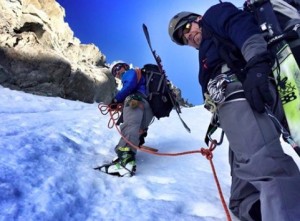
Brendan Burns (bottom) climbing the Breche Colouir, Chamonix, France, on his 2015 Ski Guide Exam. Photo: Jeff Witt
How long have you been snowboarding, and then splitboarding? What got you into splitboarding?
I began snowboarding around 1987. I built my own board from an old skateboard deck that I attached bent sheet metal to the rails to act as edges. My friend owned a Black Snow plastic board that we would share. Most of the resorts in New York and Vermont we were visiting on ski vacations didn’t allow snowboarding, especially on ones without metal edges. We would hike and ride at night, hiding from the groomers.
I started splitboarding around 2000. Living in Jackson, Wyoming, we did all of our backcountry missions on snowshoes. I built a pair of 90cm approach skis and tried them on a long tour to a backcountry cabin. They sucked, and I wound up post holing for eight hours. I think I bought my first split after that trip. My regular backcountry partners were all skiers, and I felt the need to be able to pull my weight putting in a skin track and be more efficient while ascending.
From your time in the field, I imagine you’ve seen a real need and desire among guests for splitboard guiding—how has this changed, or evolved, as more people find their way to the outdoors?
Splitboarding appears to be one of the fastest-growing segments of snowboarding. Thanks can be given to the development of quality splitboards, splitboard-specific bindings, skins, boots, and trekking poles. In addition, having some highly recognized pros in the industry like Craig Kelly and Jeremy Jones, etc., who transitioned their professions to splitboarding, has helped lead the charge. Jeremy Jones’, trilogy movies, Deeper, Further, Higher, have helped open the eyes of snowboarders to see what is possible with the use of a splitboard.
With more snowboarders turning to splitboarding, as a guide, I think it is imperative to have splitboard-specific guides to meet the demand. Snowboarding has been around long enough that there are professional people with some money who can afford to buy the appropriate gear, travel to the snowboard destinations they like, ride good snow, and hire a guide. We are not just a bunch of poor skate and surf punks anymore.
Where will you do most of your splitboard guiding? What makes that place special to you, and desirable as a venue?
I plan to do most of my splitboard guiding in and around the Teton Range of Wyoming. I have had the chance to travel to some amazing mountain ranges, and find the Tetons to be the optimal place for splitboarding and splitboard guiding. We are really fortunate to get high-quality snow year after year. The topography lends itself to terrain that is fairly steep, with long pitches of sustained slopes. This combination of good snow and sustained terrain is ideal for splitboarding.

Brendan Burns descending toward the Argentiere Glacier, Chamonix, France, on his 2015 SGE. Photo: Jeff Witt
How was your experience on your exam (when and where was it), and were you the only aspirant on a splitboard? Did you notice and hindrances or advantages over your peers who were on skis?
I took my AMGA exam in Chamonix. Being a professional guide, I was stoked to take the exam there: There is a very long history of guiding in the Chamonix Valley. I was the only candidate on a splitboard. Showing up to any exam is always nerve-racking; showing up being the only splitboarder compounded that stress. I have found throughout the years that just showing up to meet clients, new backcountry partners, or examiners I am always under the microscope. I have always, and still do, feel the need to have my equipment dialed, perform my transitions between ride and tour mode fast and efficiently, and choose downhill lines where I can limit the amount of traversing or being stuck in flats. Any way you look at it, traversing on a snowboard can be a drag. Being efficient about it will help get you into and out of tricky terrain.
During the exam, I was consistently praised by the examiners and other candidates for how efficiently I transitioned, navigated long traverses, and kept a fast pace on flat, glaciated terrain. I started skiing at a young age, and still ski these days. This has helped me to be quite efficient at split-skiing my board. During the exam, I only had to ski my board once—through pretty tricky snow conditions, on a fairly steep, treed slope. I think I had some advantages over the skiers with the poor snow conditions we faced. Being on a board, I was able to cruise through the sloppy springtime snow that appeared to give some of the skiers more trouble.
Will you go back on skis for the one-day assessment for IFMGA accreditation, since they don’t accredit splitboarding per se—yet?
I plan to do one-day ski skills assessment. I think it would be cool to have both certs. For now, I’m not sure if the ruling will change to allow splitboarders to get the IFMGA certification—the guidelines are from the old European model. I’m OK with ensuring that guides can ski. Maybe I’m a bit biased since I know how to ski. What I would like to see is a reintroduction of the old rule that skiers getting their guide certification have to have knowledge in another discipline like splitboarding or telemarking. There are guides going through the exam process now who have little knowledge of splitboarding—that’s a real bummer!!!!
What’s next, now that you have your certification?
Getting a splitboard certification was a dream since I started guiding. Snowboarding is a true passion. When I became an instructor, I went through the certification process and became fully certified. I wanted to not only be the best instructor I could be to my clients, but also be able to coach them anywhere I wanted to on the resort. As for guiding, I look at it two ways: One, I want to give my clients the best, safest experience as possible. Certification has definitely helped me accomplish this. Two, there is a new wave of splitboarders entering the mountains. I want to be the guide in the barrel of that wave. I have developed and run some splitboard-specific camps, and I hope to have more available in the future.





